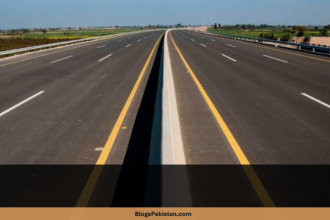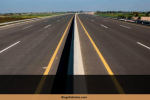Introduction: Traffic Fines From the Sky—Islamabad’s Newest Reality Show
Picture this Drones : you’re cruising down Islamabad’s Expressway, humming your favorite tune, and in a moment of haste, you miss a lane marker. Suddenly, you receive a notification—no, it’s not from your mother asking where you are. It’s a fine, courtesy of Islamabad Traffic Police’s new aerial “guardians”—drones! Welcome to the age of drone traffic monitoring in Islamabad, where law enforcement just got wings (and a serious upgrade in tech).
For everyone in Pakistan, and even our neighbours in India who face similar city traffic chaos, here’s a front-row seat to how drones are turning the tables (and tables of fines) in the nation’s capital.
Why Did Islamabad Traffic Police Turn to Drones?
Let’s face it—manual traffic policing in big, growing cities is like playing a never-ending game of Whack-A-Mole. As soon as an officer stops one violator, another zips past. Islamabad’s highways, especially the Expressway and Srinagar Highway, have become busy runways for all sorts of “creative” driving.
But now, thanks to drone technology, the days of sneaky lane-jumping and daredevil overtaking are numbered. Drones offer a bird’s-eye view, making it impossible for mischief-makers to hide behind a truck or blend in with the traffic herd.
How Does This Drone Policing Actually Work?
Here’s the scoop. In the first phase of this smart monitoring initiative, drones glide over major highways, catching violators in real-time. Not only do they spot the usual suspects—lane violators, one-wheelers, and over-enthusiastic overtakers—but also:
- Overloaded vehicles
- Illegal U-turns
- Reckless stunts
- Vehicles clogging up high-traffic spots
Once a violation occurs, the drone feeds footage straight to command centers, where officers (probably sipping strong chai) issue fines instantly. For serious infractions, vehicles are impounded on the spot and “invited” to spend some time at the police station.
Drone Fines by the Numbers: Islamabad’s Law From Above
The first week alone saw over 300 traffic violators fined and more than 350 citizens educated about better driving practices. That’s not just a crackdown—it’s a public service announcement flying overhead.
And it’s not ending here. According to Chief Traffic Officer Captain (R) Syed Zeeshan Haider, this bird’s-eye enforcement will soon expand across all sectors and major roads of Islamabad. If you thought you could outsmart the police with a little detour, think again—these drones have you covered from F-6 to F-11 and beyond.
Why Drones? A Techy Solution to an Age-Old Problem
Let’s be honest: the average traffic cop can’t be everywhere at once, especially in a city where drivers sometimes treat red lights as mere “suggestions.” Drones, on the other hand, have several superpowers:
- Real-Time Surveillance: No more waiting for “proof”—violations are caught live.
- Transparency: Video evidence means no arguments, no bribes, just the facts.
- Quick Response: With instant alerts, special traffic teams can reach congested or problematic areas faster than a speeding motorbike.
- Wider Reach: Drones cover more ground, so even the trickiest U-turns and back alleys are now under watch.
From Catching Violators to Managing Congestion
But it’s not just about catching the “bad guys.” The data drones collect is helping the ITP identify high-traffic zones and choke points. Special response teams are dispatched in real-time to untangle jams before they spiral out of control.
Imagine: instead of waiting in bumper-to-bumper traffic, you see a traffic officer appear just as things start to back up. That’s not luck or magic; it’s technology working for you.
What’s Next? The Future of Smart Traffic Policing
Phase two will see drone monitoring rolled out to even more roads across the capital. With each expansion, the message is clear—reckless drivers can’t hide, and traffic laws are more than just polite suggestions.
Chief Traffic Officer Haider puts it best: “Drone technology is proving highly effective in identifying violations instantly and ensuring swift, transparent enforcement.” Translation? Islamabad is setting a new standard, and other cities in Pakistan and South Asia would do well to watch and learn.
How Might This Tech Spread Beyond Islamabad?
It’s not just Islamabad’s story. With traffic headaches in Lahore, Karachi, Delhi, and Mumbai, drone-based enforcement could be the answer for countless urban centers across the region. More cities adopting this tech means:
- Shorter commutes
- Fewer accidents
- Happier (and possibly less frustrated) citizens
Imagine a future where traffic rules are actually followed because everyone knows “Big Brother Drone” is always watching. That’s not a dystopia—it’s a safer, saner city life.
Funny (But True) Reasons Not to Break Traffic Rules in Islamabad Now
- You can’t wave at a drone and hope it forgives your one-wheeling stunt.
- Drones don’t accept “Sorry bhai, late for a rishta meeting” as an excuse.
- Trying to hide your number plate? The drone’s HD camera probably captured your best angle anyway.
- Your friends may not see your illegal U-turn, but the drone definitely will.
What Can Drivers Do?
- Follow the rules—the sky is literally watching.
- Stay in your lane—both on the road and in life.
- Educate yourself—accept those awareness sessions when offered.
- Encourage others—be the change, not the fine.
Conclusion: High-Flying Enforcement for a Grounded Problem
Islamabad’s traffic police are showing that you don’t need more boots on the ground; you need more eyes in the sky. With drone traffic monitoring in Islamabad now a reality, every driver should think twice before bending the rules. The future of law enforcement is here, and it’s airborne.
As this technology spreads, maybe—just maybe—our morning commutes will become less of a daily adventure and more of a smooth ride. Until then, buckle up, drive safe, and remember: you’re not just sharing the road; you’re sharing the sky!










